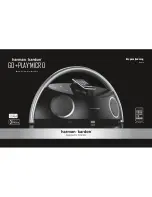
3
NHT
iC3 ARC In-Ceiling Loudspeaker Installation Guide
Placement
NHT
ARC
series of in-ceiling speakers are designed for installation in sheetrock, plaster and lath, wood and material combination ceil-
ings up to 2 /4” thick almost always between standard wood joists. Their moisture resistant drive units,
ARC
frames and stainless
steel hardware allow them to be installed in moisture prone interiors and protected exterior environments such as bathrooms, indoor
swimming pool rooms, above covered porches, sauna rooms and under eave structures. Exposed outdoor use is not recommended.
We make specific “All-Weather” Outdoor speakers for this application.
Spend some time considering placement prior to installing the speakers. Once they are installed, they are permanent, so their loca-
tion should be selected carefully. When possible, locate the speakers at least 3 feet from adjacent sidewalls and at least 2 feet from
front or rear walls to allow them to radiate over the widest possible area. The speakers should be mounted on a flat surface to ensure
a good seal between the baffle and the mounting surface – the speaker’s frame is rigid and will not flex! For the best stereo effect,
position the speakers so that they are equidistant from the most likely listening area. If the NHT in-ceiling speakers are going to serve
as rear (surround or back) channels in a home theater system, make sure to install them toward the “rear” of the room and try to get
them behind the listener for best results. For best spacing, position the NHT in-ceiling speakers 15˚ to 60˚ off-axis from the listen
-
ing position. If you wish to get an idea how they will look, try taping the supplied cutout templates to the ceiling or print to scale one
of the images from our website full-size if possible and tape to the ceiling (maybe Kinko’s will do this for you). For more information
about home theater speaker placement, try Dolby Labs website at: www.dolby.com/us/en/consumer/setup/connection-guide/home-
theater-speaker-guide/index.html
Wiring (Retrofit Installations or New Construction)
How you wire is an important subject. If you are just wiring for 2 or 4 speakers for the surround and/or back channels of a home
theater system within the same room, it a fairly simple wiring task. Be sure to always leave yourself some extra length on the ends
for working room and terminate the speaker wires to wall plates when possible (leave yourself some extra wire to work with and stuff
the excess in the wall). All this will make your life easier. Don’t nail the wire down in place unless building codes require it - you may
want to pull additional or different cables later, if you must, use large staples to “guide” the wire. At this point you once again may
consider hiring a professional installer and have a few beers with your friends instead.
Multi-room audio, where you will use multiple pairs of speakers in different rooms, is a completely different wiring situation and the
methods for doing so are too numerous to cover here. Consider what device you will amplify them with, if you will have local controls
to wire to, if you need to pull control cables like CAT6, or will the speaker wires home run to the head-end? On. and on.., and on.
Home runs to a single location are the safest but controlling the volume remotely in a room will then require a wireless command and
control system that are typically pricy. If all this sounds foreign to you, stop everything now and consult a professional to learn more
about your options and at least consider having them wire your house for the command and control system you plan to use.





























